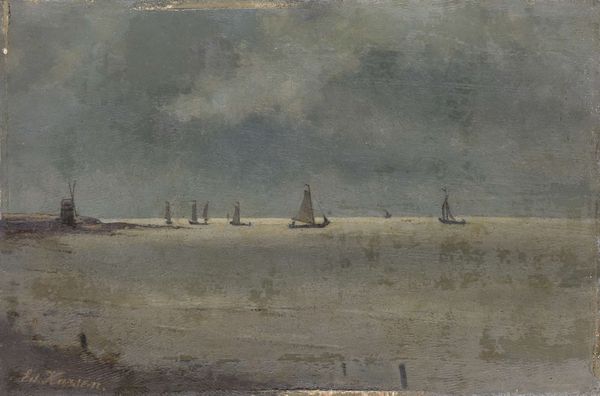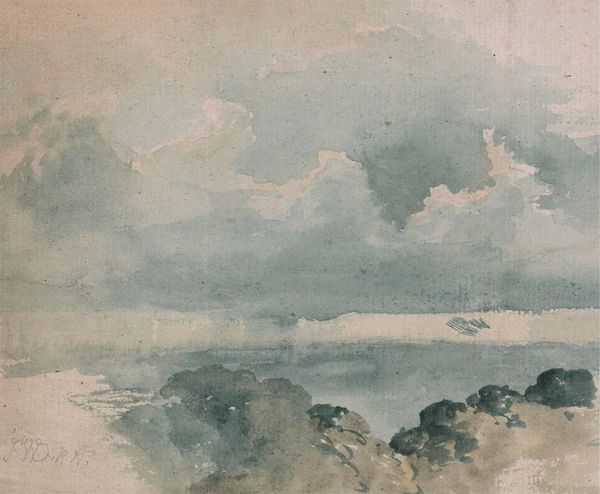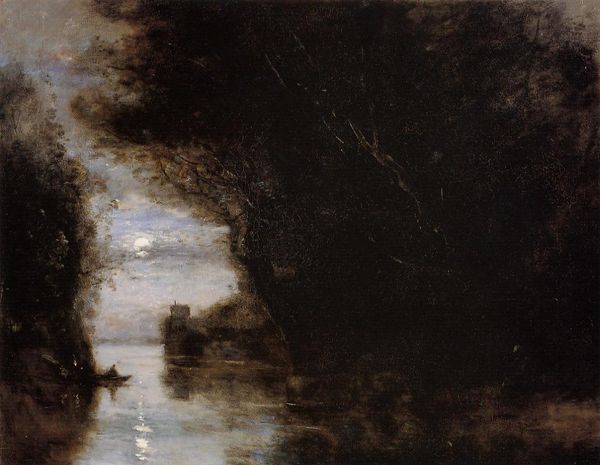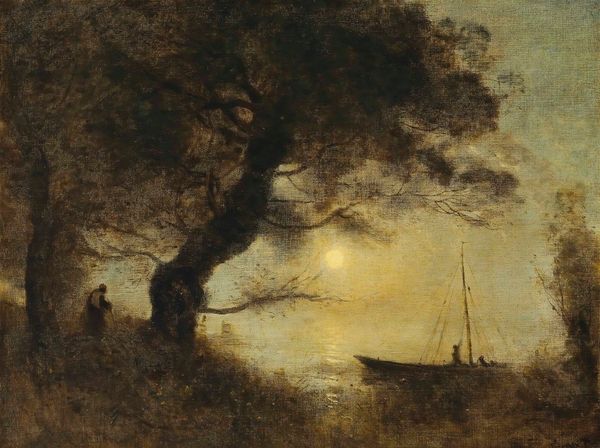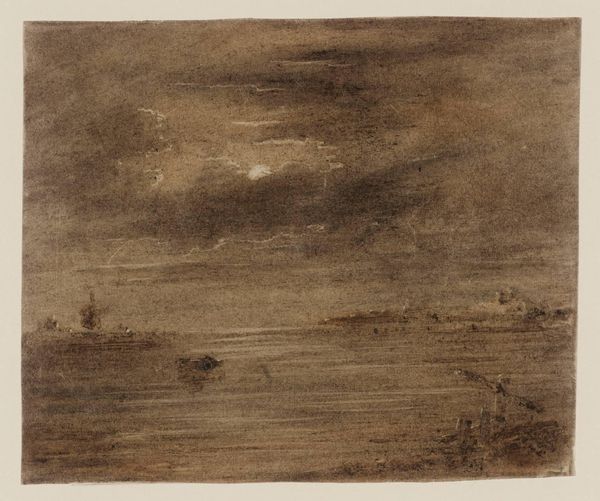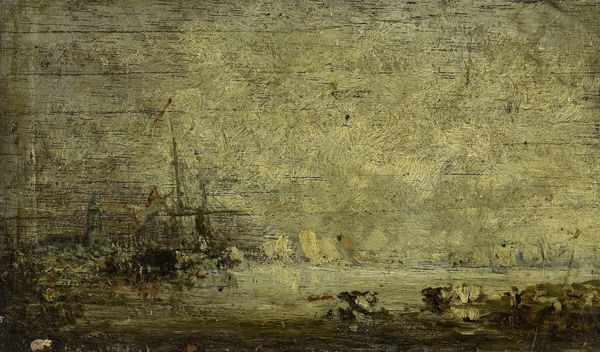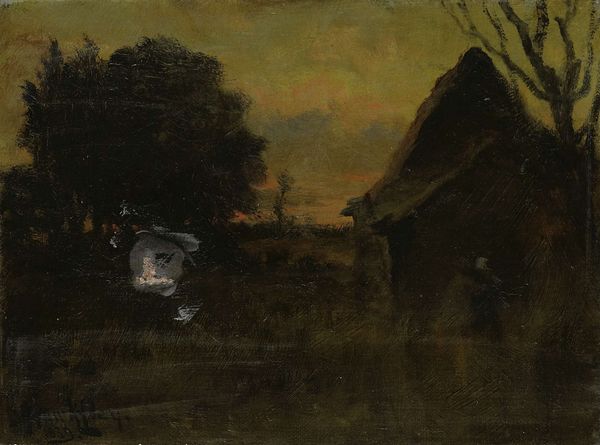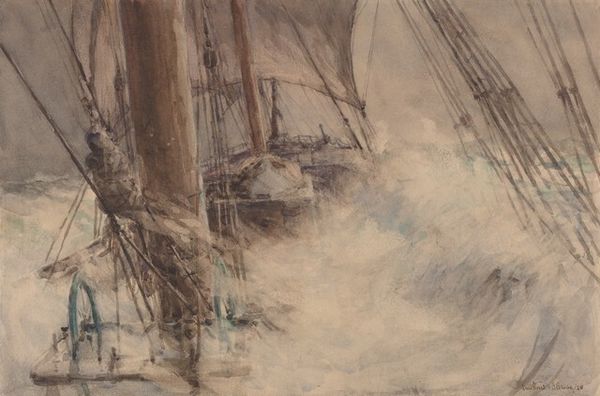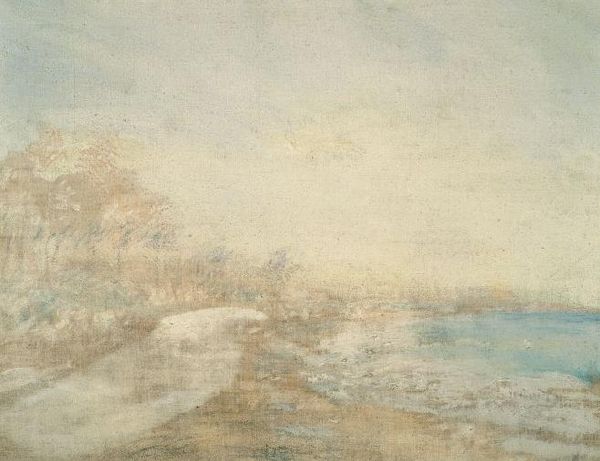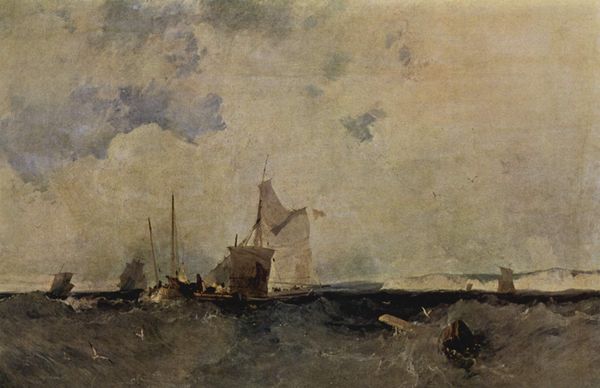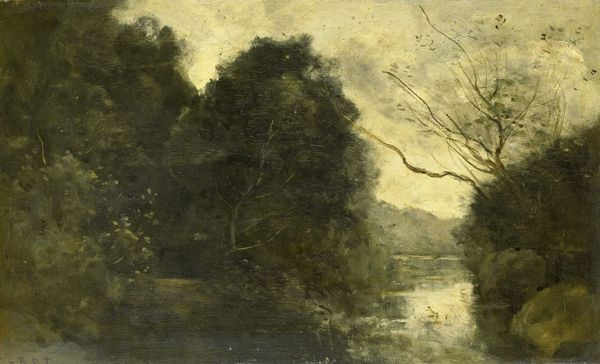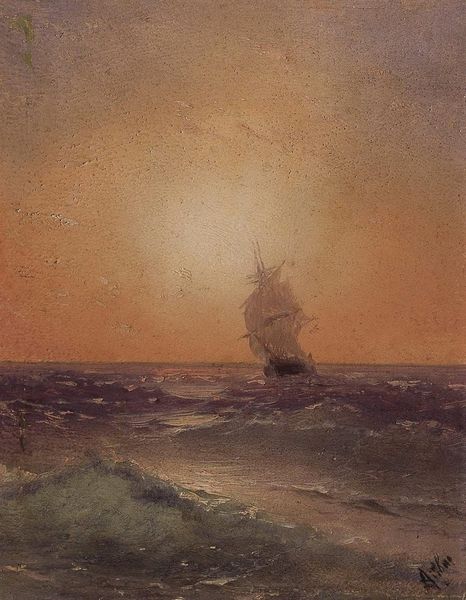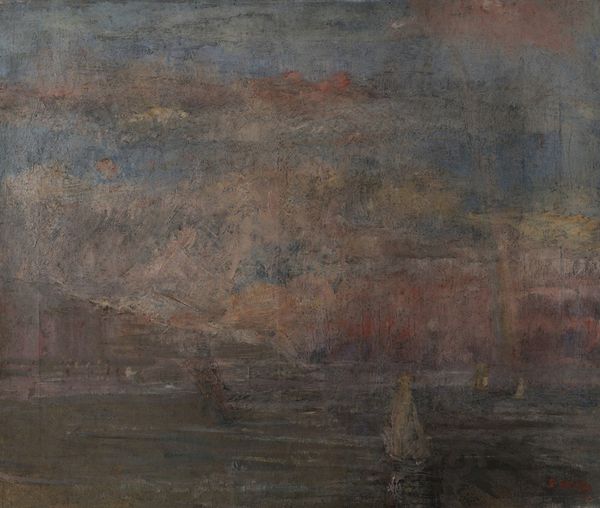
plein-air, watercolor
#
dutch-golden-age
#
impressionism
#
plein-air
#
landscape
#
charcoal drawing
#
watercolor
#
charcoal
#
watercolor
Dimensions: height 431 mm, width 243 mm
Copyright: Rijks Museum: Open Domain
Editor: We’re looking at "Landscape with a Windmill by Moonlight," created by Jacob Maris, sometime between 1847 and 1899. It’s a watercolor and charcoal piece here at the Rijksmuseum. The palette is very subdued. I'm initially struck by how effectively Maris evokes a melancholic mood. What visual elements create that feeling for you? Curator: Indeed. Consider the work's structural dichotomy: the strong verticality of the trees juxtaposed with the horizontal stretch of the land and water. The tonal range, largely monochromatic, uses variations in shading rather than hue to delineate form. Notice the texture – the rough, almost impasto-like application of watercolor in the sky versus the delicate charcoal rendering of the windmill. How does this contrast influence your perception? Editor: I see how the rough sky emphasizes the heavy atmosphere. The sharp detail of the windmill contrasts and pulls it forward visually. It's interesting how much texture is achieved with watercolor! It almost feels sculptural. Does this emphasize the windmill's presence as an iconic Dutch form? Curator: Possibly. Let us analyze it formally first, before assuming meaning. The location of the windmill is interesting - just off the midpoint, creating asymmetry, though stabilized by the dark mass of trees to the left. Furthermore, observe how the directionality of the windmill blades guide our eye through the landscape, creating movement and tension. Does that directional push also play into the overall somberness? Editor: Absolutely, it subtly disturbs what could be a very static composition. Now I'm wondering about the cultural context too. Maris seems to have skillfully deployed composition to build a mood before we even factor in windmills, moonlight, and what those things mean symbolically. Thank you, that was fascinating. Curator: Precisely. This underscores how understanding the artist's formal choices illuminates the potential interpretation, moving beyond subjective emotional responses. A beneficial lesson.
Comments
No comments
Be the first to comment and join the conversation on the ultimate creative platform.
